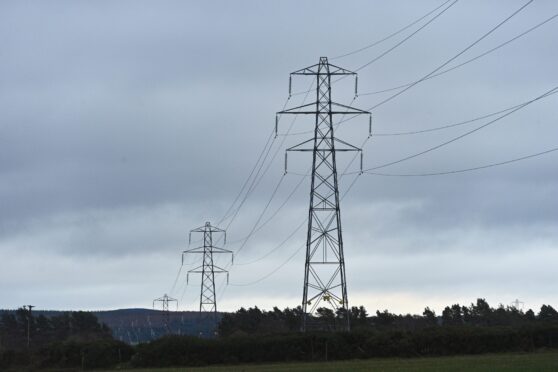Thousands of farmers and landowners in the north and east are set to be affected by Scottish and Southern Electricity Networks’ (SSEN) £20 billion upgrade to the network infrastructure between now and 2030.
Consultations are ongoing for three projects including The East Coast 400kV Phase 2 Upgrade from Tealing to Kintore, The Beauly – Blackhillock – New Deer – Peterhead 400kV Overhead Line and The Spittal – Loch Buidhe – Beauly 400kV Connection.
Rural surveyor and consultant firm Davidson and Robertson says that timescales and consultation deadlines change, and that those potentially affected need to be aware of modifications.
Alasdair Allan, senior associate of the firm, and lead on infrastructure issues at Davidson & Robertson says: “The next steps are crucial but not always clear and time is of the essence.
“Appoint or get in touch with your land agent as soon as you know your land will be impacted by the works. The earlier a team is engaged to represent you, the more scope they have to achieve the best outcome for your business.
‘Next steps are crucial and time is of the essence’ says Alasdair Allan
“You are likely to have reasonable professional advice costs covered by the energy company which means you can receive professional advice from the earliest stage and throughout the development process to ensure that you are fully compensated.”
Alasdair urged those affected not to sign anything until advice has been taken as this could result in the farmer or landowner missing out on compensation.
He also said that the farmer or landowner is responsible for ensuring that all losses, disturbances and costs incurred as a result of the works are mitigated as far as possible, where reasonable to do so.
“It is vital that you understand how the proposed works will impact you and your land, and you need to mitigate the impact as much as possible,” said Alasdair.
“Not everyone knows the extend of what can be claimed but a land agent can clarify that for you. As a general rule, claims fall under four key considerations which are loss of land use, disturbance, reinstatement, and client time.
‘Mitigate the impact as much as possible’
“Keep a detailed diary of the time you spend talking with statutory undertakers with your land agent and in accommodating the works so that this can be fully compensated. This is an area often overlooked by farmers but is a very valid claim.”
While electricity companies do have statutory powers allowing them to construct new transmission lines, Alasdair says there is often much that can be negotiated, sometimes in terms of routing of the line/siting of pylons, but certainly on compensation packages and mitigation measures.
He says they also have the right to take access to their existing infrastructure for maintenance purposes, but again there is much to be agreed in advance of permitting entry.
“Once the works are completed, the electricity company is duty bound to reinstate the land back to its previous state and to the landowner/tenant’s satisfaction,” says Alasdair.
“It can sometimes take several years for land to get back to full production and up until that point, compensation can be claimed to ensure that farmers are not left any worse off as a result of the works.
“Importantly for those affected, the legislation (Electricity Act 1991) surrounding work to the electricity networks allows landowners and tenants to instruct a land agent at the cost of the statutory undertaker.”











